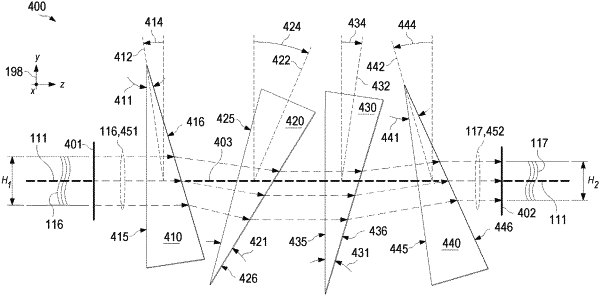| CPC G03B 21/142 (2013.01) [G02B 27/0972 (2013.01); G03B 21/208 (2013.01); G03B 21/28 (2013.01)] | 14 Claims |

|
1. A projector comprising:
a light source configured to generate illumination;
an integrating rod;
an image panel configured to display an image at a displayed aspect ratio;
a beam shaper including multiple prisms shaped and oriented such that when the beam shaper intersects an optical path of the illumination between the integrating rod and the image panel, the illumination transmitted by the beam shaper is collinear with the illumination incident on the beam shaper;
an actuator mechanically connected to the beam shaper and configured to switch the projector between (i) a first configuration, in which the beam shaper does not change an aspect ratio of the illumination, and (ii) a second configuration, in which the beam shaper intersects the optical path between the integrating rod and the image panel and changes the aspect ratio of the illumination,
wherein the multiple prisms include four identical prisms P1, P2, P3, and P4 having an apex angle α and being tilted at respective angles ϕ1, ϕ2, ϕ3, and ϕ4 in a plane parallel to the optical path of the illumination incident on prism P1 and transmitted by prism P4, where to within a two-degree tolerance, ϕ3=−ϕ1 and ϕ4=−ϕ2.
|